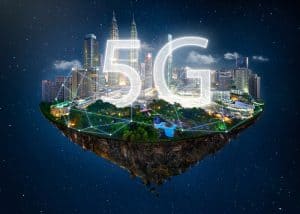
5G will greatly increase the amount of data that can be sent at one time and the speed at which it can be sent.
The heart of any continuous intelligence (CI) effort is having access to real-time data to make decisions based on events as they are happening. The plethora of smart sensors and Internet of Things (IoT) devices organizations use (or plan to use) in their CI efforts means large amounts of structured and unstructured data will be available for analysis. The challenge is how to get access to that data in a timely manner. Some see (fifth-generation cellular) 5G services playing an important role.
5G will greatly increase the amount of data that can be sent at one time and the speed at which it can be sent. Crucially, it will enable the use of Internet of Things and smart sensors for mainstream applications.
See also: How 5G Could Improve Food Traceability
Noting that more companies need to prioritize data collection because of its value, a recent study expects the expansion of 5G will “force companies out of their silos and into larger environments that allowed for more access to tons of new information.”
The ability to collect, sort, present, and use data will be crucial now that companies will have more access to information thanks to 5G networks. The report says that right now, most data “remains dark, disparate, and isolated.”
How will 5G help? 5G services offer higher data transmission speeds (in excess of 1 gigabit per second) and low latency (down to a few milliseconds) compared to existing cellular wireless services. These capabilities are essential in some CI applications where decisions based on analyzed real-time data need to be made in milliseconds to minutes. Pumping more data through at faster rates and reducing latency will help improve the performance of a CI application.
Unfortunately, there are obstacles that will slow or prevent the use of 5G for CI or any application. As has been the case with the deployment of new services in the past, 5G services only will be available in select locations in the short term. Even if 5G is deployed in a city or town, there may be large gaps in coverage.
One other issue that must be addressed if 5G is to be used to provide data to CI applications is the building penetration issue. The extremely high frequency bands used to transmit some 5G data basically bounce signals off building walls. When 5G becomes available, many buildings will require cellular aids for reliable in-building coverage. Businesses, homeowners, and city dwellers have used similar technology to deal with weak cellular signals in buildings in the past. For example, most service providers have offered mini cell towers that improve cell signal performance for voice calls, texts, and cellular data applications. The same approach will likely be needed with 5G.







